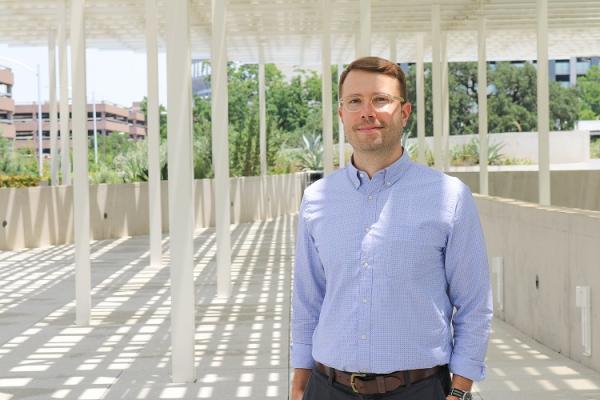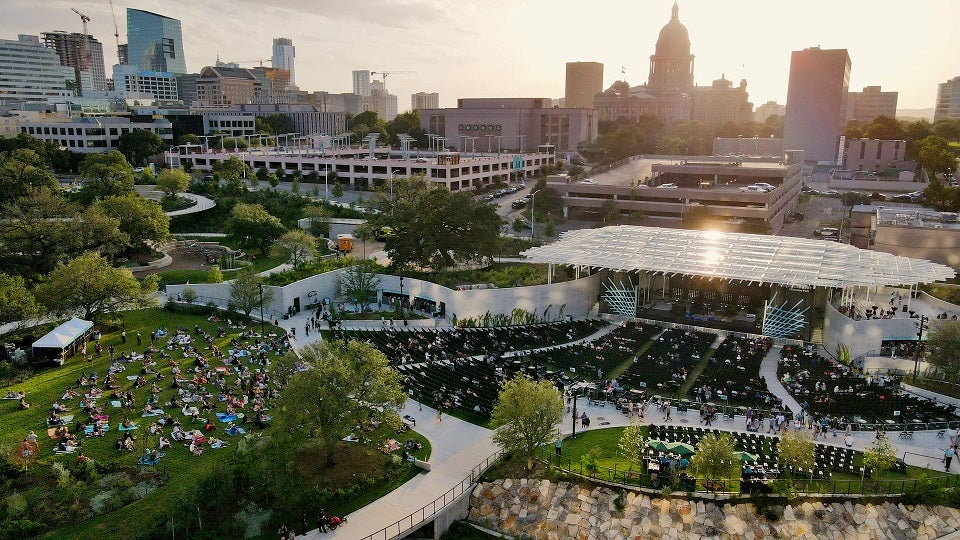Alumni Profile: John Rigdon

Why do public spaces and civic life matter? Why should we care?
Public spaces matter because they are free and accessible spaces where the community can come together. People can relax, gather, have fun, and be themselves in public spaces. The act of enjoying these spaces together creates a sense of community pride and a collective identity. This is vital to healthy civic life.
Public spaces and civic life are increasingly under threat as municipal budgets are cut and people have less need to interact with each other in their daily lives. Privatization of services and the increase in online social interactions can reinforce or worsen divisions and social isolation. We should care because these public spaces foster in-person human interaction. People generally behave better when viewed publicly by their peers. This allows people to better understand and value each other as members of a collective community.
Public spaces are also where the fun, unpredictable, and weird aspects of living in a city can be freely experienced. I believe that these experiences truly define the identity of a place by creating shared stories and myths. The identity of a place (e.g., “what makes Austin, Austin”) usually plays out in the public realm.
How did your education at the School of Architecture influence your professional life?
My education at the School of Architecture provided me with the vocabulary and skills to understand complex urban issues. I never read an article titled “How to Develop an Urban Infrastructure Reuse Park Project through a Public-Private Partnership and an International Design Competition.” However, I did build a foundation of knowledge about how cities work and how to create and manage effective planning processes. This baseline has proven invaluable as I navigate new territory with the Waterloo Greenway project.
My education also helped me learn the importance of understanding and representing the needs of the people who will be served by a project. Context is critical and that is best understood through the local community. The School of Architecture introduced me to the models and tools that guide my work with community engagement and participatory planning.
Lastly, my time at the school allowed me to expand my knowledge beyond urban planning. I was able to take classes that introduced me to the history and theory of landscape architecture, real estate development, and law. This cross-training in different fields has been important as I navigate connecting the public-private partnership, the community, and the project design.
Can you describe a pivotal moment in your career or educational experience that transformed the way you view your work?
The first thing that comes to mind was the opening of Waterloo Park. Our project team spent years working on the planning, community engagement, and design of the park. We understood all of the details and knew all of the challenges that arose during the more-than-seven years of design and planning. It felt like we knew everything there was to know about the park. However, once it opened, my perspective changed. People started using the park in new, surprising, and sometimes unconventional ways. Some products and ideas that made so much sense on paper ended up being less useful in reality. It was genuinely surprising and eye-opening to watch this happen in real time.
I also didn’t anticipate the impact that it would have on me to be a part of creating a real, physical space for others to enjoy. In urban planning, we spend a lot of time thinking about things in the abstract or as frameworks at a large scale. Planning documents can often be a bridge to what’s next rather than the creation of something tangible. It has been immensely rewarding to watch people enjoying and experiencing something that I put so much time into. This has also been very instructive as I look toward future projects.
What are the most pressing issues that your field must focus on in the future?
As our population continues to grow—particularly in cities—our current parks and public spaces are becoming insufficient to meet the needs of the community. They are suffering from overuse and underinvestment. At the same time, growth has impacted the availability of land to create new public spaces and amenities. We have to fight for public space wherever we can. This can take many forms, including infrastructure reuse, acquisition of underutilized land, or redevelopment of existing public spaces. Additionally, we have to think critically about the role that public spaces should play in the future. My belief is that public spaces need to do much more than simply provide access to nature. Public spaces are opportunities to serve the community in a range of ways that are relevant to modern life. They can provide fitness and health services, education, cultural events, and more, while still providing access to nature. Our parks and open spaces need to be designed, built, and operated with that intention. This means creating hard-working public spaces with the infrastructure and accessibility required to meet these new demands. If we do this, we can continue to evolve our public spaces to meet the needs of the community while not losing critical access to green space.
Real estate development will continue to put pressure on parks and open spaces in rapidly growing urban areas. Growth can have the positive effect of creating more park users and a larger tax base for a community. This can lead to increased support for public spaces at an individual level. However, we don’t appropriately value the impacts of growth on our parks in our land development code and policies. Our professions need to continue to develop tools that appropriately assess the financial impacts of growth on public spaces. Doing so will provide us with the resources to take care of and grow our parks and public spaces to meet the needs of our communities in the future. Nonprofit partners are a part of the solution, but they can’t be the only solution.
Broadening our definition of public spaces is also important. Parks and traditional civic gathering spaces remain important, but we should also consider the role that streets, sidewalks, and smaller public spaces can play in creating a better public realm. It will be increasingly important to think about all of these spaces not just as engineering challenges, but as opportunities to serve the needs of the community. An active and beloved public realm provides eyes on the street, making our communities safer and better connected.
How can students prepare for this future?
Students who are interested in public space should take advantage of opportunities to broaden their knowledge outside of their degree area while in school. Understanding public policy, architecture and design, and public finance are still critical. However, public-private partnerships and fundraising have become vital to modern public space development. An understanding of how these partnerships work will prepare students for the future. I would additionally encourage students interested in parks and public spaces to take courses about private real estate development and finance. Understanding what is important in the development process can help identify policies and partnership opportunities that can support the growth of public spaces.
Finally, I would encourage students to get to know how their local government works. Reading about this can only teach you so much. Understanding how decisions really get made can help guide you to the areas in planning, policy, architecture, and design where you can have the greatest impact. Go to council and commission meetings, volunteer at events, attend public meetings. These are the best ways to see how things really get done.
What impact do you hope to make in your future career trajectory?
It is truly rewarding to play a part in creating the types of public spaces that I think our community deserves. I would like to continue to find ways to bring ambitious public projects to life. I hope that my work will help prove that the public-private model works for open space projects, and that we deserve as much attention to detail and investment in our public spaces as we get in our new restaurants, bars, and living spaces. I also hope that my work in Austin stays true to our city’s identity while creating space for new stories and memories. I think we can have it both ways here, and I hope to play a part in that with the work I do.
John Rigdon
Vice President of Projects and Planning, Waterloo Greenway
MSCRP '13


